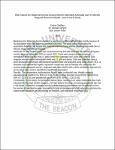| dc.description.abstract | Background: Maternal Anemia remains a significant public health problem mainly because of its association with poor maternal and fetal outcomes. The study aimed o to assess the association between risk factors and maternal anemia among women attending antenatal care at Moroto Regional Referral Hospital.
Methods: A case-control study was conducted among 100 (50 cases and 50 controls) Pregnant women between November 2021 to march 2022. Cases were pregnant women whose hemoglobin level was less than 11 g/dl at their first antenatal care visits and Controls were pregnant women whose hemoglobin level was 11 g/dl and above. Data was collected using a semi-structured interviewer-administered questionnaire and analyzed using Stata version 15.0. A bivariate and multivariate logistic regression model was used to identify the risk factors for anemia among pregnant women. Adjusted odds ratio (AOR) with a 95% confidence interval (CI) and p-value were used to identify the significant association.
Results: The independent risk/protective factors were; residential area, Wealth category, education level (AOR=0.16, 95% CI: 0.03, -0.89), Dietary diversity score (DDS) (AOR=0.51, 95% CI: 0.14 -1.82) and gestational age (AOR=3.78, 95%CI: 1.36,10.55).
Conclusion: In this study, the protective factors were; residing in an urban residential area, high education levels, high wealth category, and high dietary diversity. Increasing gestational age was a risk factor. Prevention strategies should include improving livelihood and household income for women of reproductive age, advocating for and encouraging girl child education, community-based health education and counseling on nutrition, and improved household DDS | en_US |

